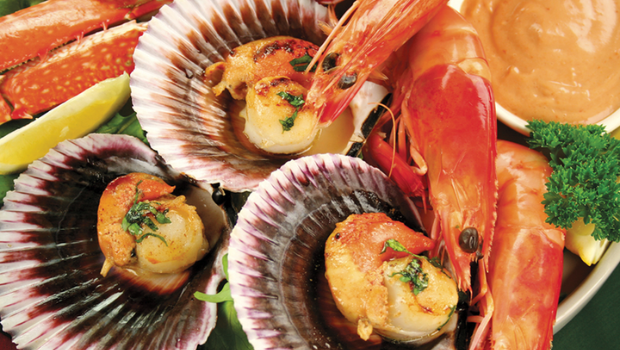Sustainable Shellfish: Superfood of the Sea
The perfect food may not be underfoot, but rather, underwater. It’s delicious, fast-growing, nutritionally dense, sustainably produced, locally available from coast to coast and comes in nature’s own sturdy packaging. “Shellfish is the most sustainable protein on the planet. There are no antibiotics, no pesticides, no fertilizer and no feed needed to raise shellfish,” says Bob Rheault, executive director of the East Coast Shellfish Growers Association, which represents 1,500 shellfish farmers from Maine to Florida.
Shellfish is a nutritional powerhouse, providing proteins, essential amino acids, long-chain polyunsaturated fats, vitamins and carotenoids. The drastically shorter life cycle of shellfish compared to other farmed seafood also means shellfish producers can generate more food more quickly.
Shellfish also offer many ecological benefits; they filter the water, remove excess nutrients and create habitat for juvenile fish, Rheault says. A single oyster can filter up to 50 gallons of water per day, according to the Oyster Recovery Partnership, an organization that restores reefs in conjunction with a shell recycling network of restaurants and public drop sites across the mid-Atlantic region.
Ray Hilborn, a biologist and professor at the University of Washington School of Aquatic and Fishery Sciences, in Seattle, has compared the relative environmental costs of different food sources, including grains, poultry and imitation, plant-based meats. He has found that farmed shellfish, specifically mollusks like oysters, clams and mussels, provide the lowest impact protein of them all. “Shellfish has a very low carbon footprint and enormous yield per area,” he says. “Mussel farms, for example, are pretty much just ropes hung from rafts, with no changes to the ecosystem or loss of biodiversity, as compared to agriculture.”
Bivalve shellfish like clams and oysters are mainly sourced from farms because wild stocks are largely depleted due to overharvesting, habitat loss and other contributing factors. “Somewhere around 90 percent of mussels and oysters on the market are farmed,” Rheault says. “If you see perfect-looking oysters at the raw bar, you know they are farmed. Out of the wild, they can look gnarly.”
Restorative aquaculture, which produces seafood using scientific principles that enhance coastal environments, may be one of the best opportunities to restore ecosystems while feeding the Earth’s growing population, according to a report from The Nature Conservancy. However, Hilborn points to “the impact of food, not just how it’s grown, but how it got to you.” Processed shellfish has a bigger carbon footprint, so it’s ecologically desirable to look for fresh, local options whenever possible.
Local production has a culinary benefit, too. “Every waterway has its own unique ‘merroir’, or flavor, that comes from the local environment. The differing levels of salinity and minerality, among other things, can lead to a very different flavor,” adds Rheault. While there is only one dominant species of oyster on the East Coast, there are three varieties found on the West Coast and dozens more around the world, each with different flavor profiles, according to Rheault; oysters also have differing flavors throughout the year. “Fall oysters have a rich, full flavor; they can be skinny in the spring. I like them in winter best of all.”
Perry Raso, owner of the Matunuck Oyster Bar and Farm, in Wakefield, Rhode Island, and a leader in the growing shellfish farming industry, grew up digging littleneck clams as a youngster. He earned a graduate degree in aquaculture before launching and growing a multifaceted business, including a restaurant, a seven-acre oyster farm and an organic vegetable farm. He raises and sells more than 1 million mature oysters a year and also supplies 5 million seed oysters to other aqua farmers.
Voted one of the top 20 seafood restaurants in the country by Time Out, Matunuck Oyster Bar serves several shellfish delicacies, including a classic oyster stew made with rosemary broth, scallop ceviche, quinoa crab salad and oysters on the half shell with a cucumber passionfruit gazpacho. The menu also features “vegan scallops” made from seared king oyster mushrooms.
Rheault’s favorite way to eat an oyster, though, is simply with two drops of lime. “The lime knocks out your salt receptors and allows you to really taste the other flavors,” he says. “Grilling is another great way to introduce people to oysters. You don’t even need to shuck them; the grilling firms up the meat.”
Connect with Washington, D.C., freelance writer April Thompson.




























